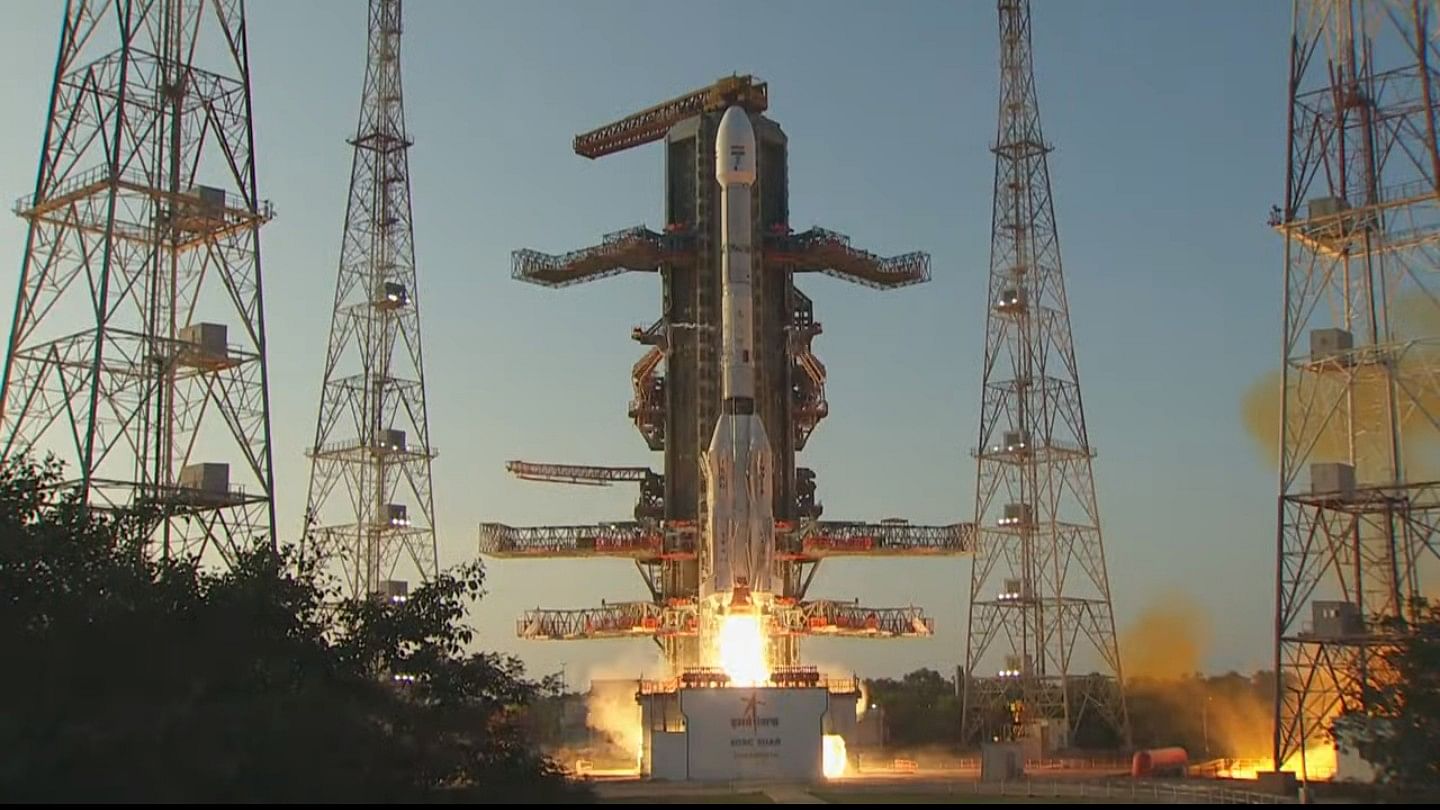
Saturday’s launch is the second satellite mission for Isro in 2024 after the successful launch of PSLV-C58 carrying XPOSAT, the country’s first dedicated satellite to study black holes, on January 1.
Credit: YouTube/ ISRO official
Chennai: In the second mission this year, the Indian Space Research Organisation (ISRO) on Saturday successfully launched INSAT-3DS, which will help derive enhanced meteorological observations and study Earth and ocean surfaces for weather forecasting and disaster warning, from Sriharikota near here.
Geosynchronous Satellite Launch Vehicle (GSLV)-F14, which according to scientists has matured into an “obedient and disciplined boy” from being a “naught boy”, launched the satellite at 5.35 pm from the second launch pad of the Satish Dhawan Space Centre (SDSC) in Sriharikota, 110 km from here.
About 20 minutes after the launch, the three stage rocket with a cryogenic upper stage got separated from the vehicle as planned and placed the satellite into a Geosynchronous Transfer Orbit. Scientists at the ISRO will now undertake a series of manoeuvres to place the satellite into the Geo-stationary orbit in the coming days.
The satellite, fully funded by the Ministry of Earth Sciences, will augment India’s meteorological services along with the presently operational INSAT-3D and INSAT-3DR in-orbit satellites, and is a follow-on mission of 3rd generation meteorological satellite from Geostationary Orbit.
Saturday’s launch is the second satellite mission for ISRO in 2024 after the successful launch of PSLV-C58 carrying XPOSAT, the country’s first dedicated satellite to study black holes, on January 1. India is only the second country in the globe after the US to launch an advanced astronomy observatory to study black holes and neutron stars.
“The spacecraft has been injected into a very good orbit. The injection conditions were as expected and the vehicle has performed very well,” ISRO Chairman S Somanath said, announcing the success of the launch.
He added that the satellite will augment the capability of observation of various atmospheric parameters that leads to information related to weather and climate.
Mission Director Tomy Joseph said the successful launch by GSLV has given much confidence to the space agency to use the launch vehicle in the future. “The naughty boy has matured as a very obedient and disciplined boy. Like PSLV (Polar Satellite Launch Vehicle), GSLV has also become a robust vehicle for ISRO,” he said.
The Satellite carries 6 Channel Imager, 19 Channel Sounder payload, Data Relay Transponder(DRT) and Satellite aided Search and Rescue (SA&SR) transponders. Imager and Sounder payloads are similar to the payloads flown on INSAT-3D and INSAT-3DR with significant improvements in radiometric performances.
India Meteorology Department (IMD), National Centre for Medium-Range Weather Forecasting (NCMRWF), Indian Institute of Tropical Meteorology (IITM), National Institute of Ocean Technology (NIOT), Indian National Center for Ocean Information Services (INCOIS) and various other agencies will be using the INSAT-3DS Satellite data to provide improved weather forecasts and meteorological services.
The satellite will monitor Earth’s surface, carry out oceanic observations and its environment in various spectral channels of meteorological importance, besides providing a vertical profile of various meteorological parameters of the atmosphere, such as sea and land surface temperatures.
It will also provide the Data Collection and Data Dissemination capabilities from the Data Collection Platforms (DCPs).